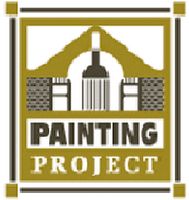
Interior Painting Greater Boston, Masachussetts, MA
Don't be Afraid to Spin that Old Color Wheel!
If you're looking to step out of your interior design comfort zone, there's one way to do it painlessly and easily: try some of the hot new paint hues that are available at your local paint store.
If you've just moved into a new home, try adding some dynamic splashes of color to those drab, neutral walls--something that reflects your individual personality. If you've already lived in your home for a while, you can revitalize your walls by adding touches of bold colors.
You'll find that paint companies have made it much easier for you to add drama to your interior walls. They've created better paint, with less odor and less spatter problems, and they're eager to offer advice on how to spice up your interior walls.
Paint Color Choices
If you find yourself somewhat intimidated by old color wheel, which as traditionally told designers what colors go with what other colors, perhaps you'd do better just to think in terms of color families. You can also begin to take notice of particular color combinations that catch your eye as you travel about your daily routine. Then, once you see something you like, talk to your local paint store about recreating that look in your own home.
According to paint and décor experts, the blue-and-white spa-inspired color trend that dominated many recent decorating schemes has waned, and many people are now turning to other pastels, especially in bedrooms and baths, where soft pinks, pale yellows, and misty lavenders have been growing in popularity.
As for specific colors, a yellowy-green color from Dutch Boy called Peaceful Pines has become popular, according to its manufacturer. Glidden has seen their Golden Kiwi on the increase, which spices up neutral and dark hues. Pratt and Lambert has a color that’s somewhere between aqua and teal blue that they call Boucle that's showing signs of popularity, as well. A new color that is hot for Pittsburgh Paints is called Cathedral Glass, which is described as being a very organic color, sort of a blending of grass and sky. Behr also has seen an increase in the use of a warm, natural-looking green color they call Mother Earth. Duron’s bold red color called Ablaze is a hot-seller at the moment, as is Sherwin-Williams' intense bluish green called Jargon Jade. Finally, Benjamin Moore has seen their purple-based color Queen’s Wreath becoming increasingly popular.
Regardless of what new colors you choose, this time of year is a great time to work on your home's interior painting scheme. You'll be amazed at what a simple thing like changing the color of your walls can do to brighten your spirits and add a little more zest to your life.
Copyright © 2006 Jeanette J. Fisher
Jeanette Fisher, America's "Dream Home" Maker, helps people turn houses in homes for glorious living and top-dollar sales. More information about color psychology and free interior design information for your home or home staging for selling at http://www.designpsych.com
Article Source: http://EzineArticles.com/?expert=Jeanette_Joy_Fisher